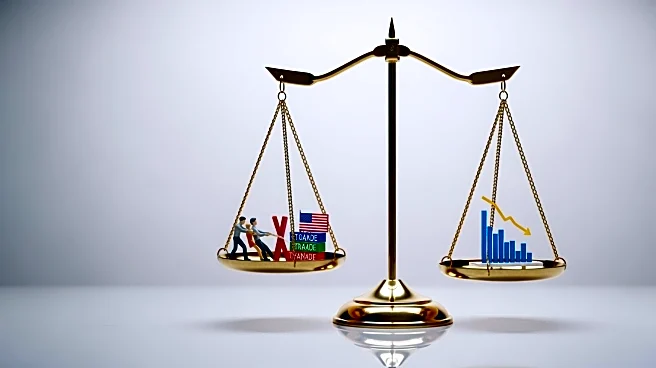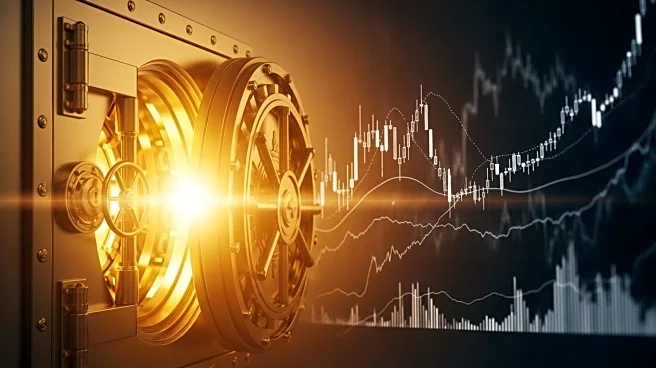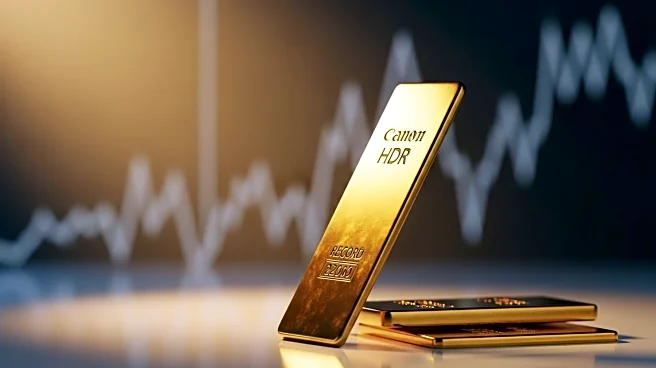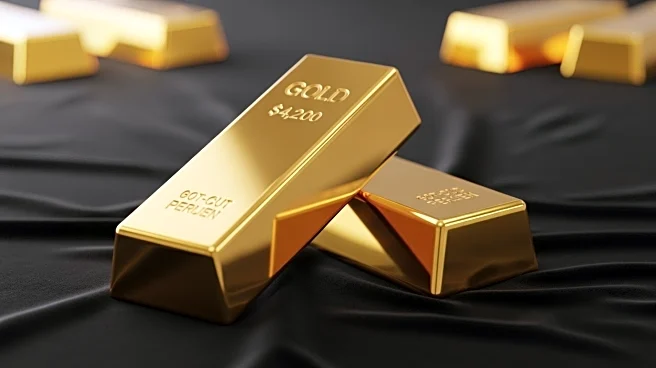What's Happening?
Gold prices have surged to a new record high, driven by escalating U.S.-China trade tensions and expectations of interest rate cuts. As of Thursday, spot gold was up 0.7% at $4,235.41 per ounce, having reached a peak of $4,243 earlier in the day. This
marks the fifth consecutive session of gains for gold, which has risen 61% year-to-date. The increase in gold prices is attributed to its status as a safe-haven asset during times of political and economic instability. The ongoing trade spat between the U.S. and China, particularly concerning China's expansion of rare earth export controls, has heightened investor uncertainty, prompting a shift towards gold. Additionally, the U.S. government shutdown, now in its second week, is estimated to cost the economy $15 billion per week, further influencing market dynamics.
Why It's Important?
The surge in gold prices reflects broader economic and political uncertainties impacting global markets. As investors seek stability, gold's appeal as a non-yielding asset grows, especially in a low interest-rate environment. The likelihood of interest rate cuts by the U.S. Federal Reserve, with traders pricing in a 25 basis-point cut in October and another in December, enhances gold's attractiveness. This trend underscores concerns over U.S. policy credibility and the potential economic fallout from prolonged trade disputes and government shutdowns. The implications for U.S. industries are significant, as disruptions in supply chains and economic slowdowns could affect production and growth.
What's Next?
Looking ahead, the trajectory of gold prices will likely depend on the resolution of U.S.-China trade tensions and the Federal Reserve's monetary policy decisions. Analysts suggest that maintaining physical demand and increasing financial demand for gold allocations could push prices to $5,000 by 2026. Stakeholders, including investors and policymakers, will closely monitor developments in trade negotiations and interest rate policies, as these factors will play a crucial role in shaping market conditions and economic stability.
Beyond the Headlines
The rise in gold prices also highlights deeper concerns about global economic resilience and the effectiveness of traditional monetary policies in addressing contemporary challenges. As central banks continue to grapple with low interest rates and inflationary pressures, the role of gold as a hedge against uncertainty becomes increasingly relevant. This situation may prompt a reevaluation of investment strategies and risk management approaches among financial institutions and individual investors.













